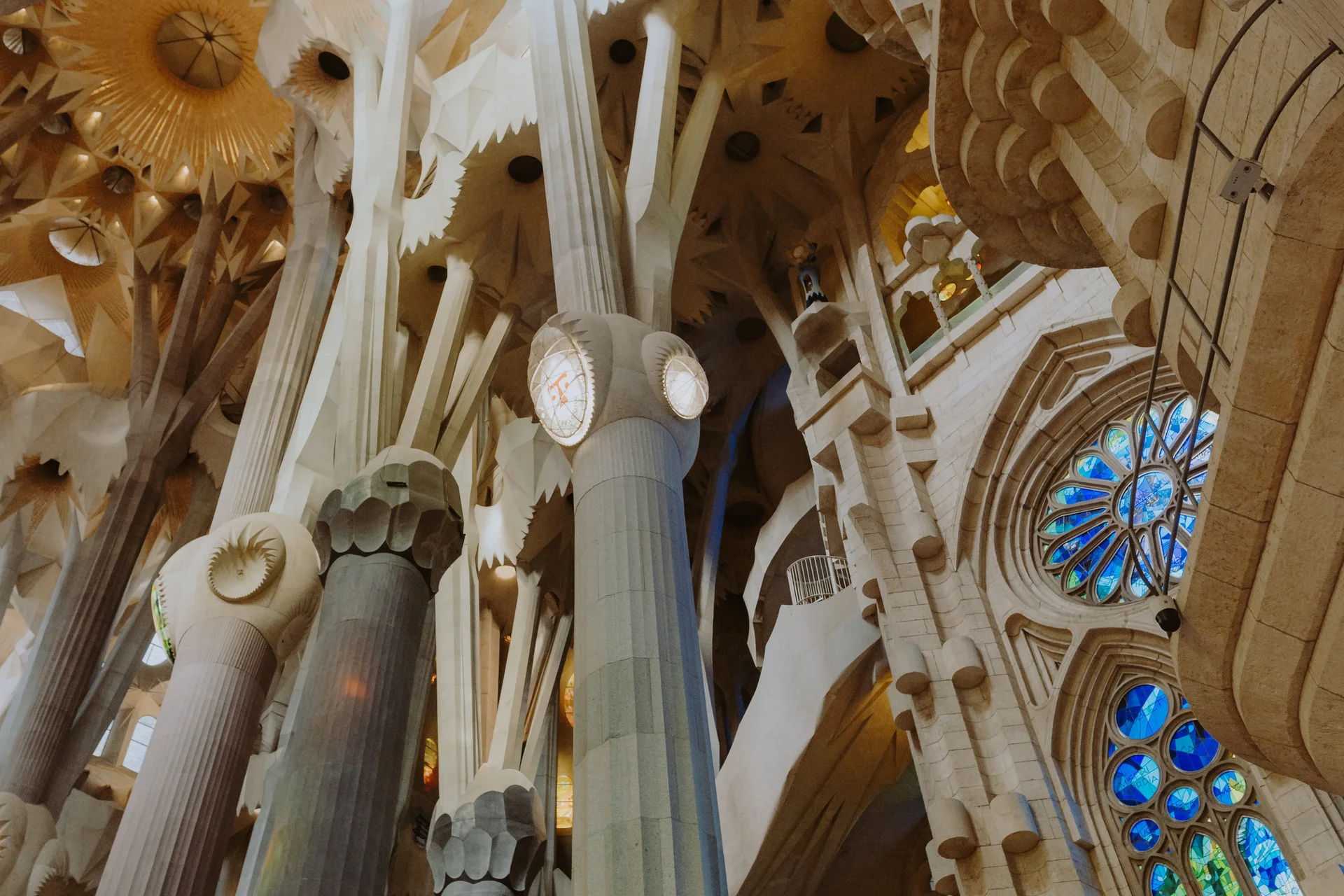
Antoni Gaudí's Seven Modernist Works Across Barcelona's Cityscape
Revolutionary Architecture Blending Nature with Modernisme
About This Site
The Works of Antoni Gaudí represent seven architectural masterpieces that revolutionised building design through innovative structural solutions and unprecedented artistic expression. These extraordinary buildings in Barcelona demonstrate Gaudí's genius for integrating natural forms with cutting-edge engineering, creating architectural language that influenced modern design worldwide. His revolutionary approach eliminated traditional load-bearing walls whilst introducing organic structural systems inspired by nature, allowing buildings to achieve unprecedented heights and sculptural complexity. Each building expresses profound Catalan cultural identity through every sculptural detail, transforming functional architecture into total artistic environments that seamlessly blend Gothic traditions with modernist innovation. The collection showcases the complete evolution of Gaudí's creative vision from early Mudéjar influences to his mature naturalistic style.
Why It Matters
Gaudí's works demonstrate exceptional creativity and technical innovation that influenced architectural development worldwide. His revolutionary structural systems, naturalistic design philosophy, and integration of traditional Catalan craftsmanship with modernist innovation created entirely new architectural possibilities that continue inspiring contemporary architects and urban planners globally. These buildings represent outstanding universal value.
Masterworks of Architectural Genius
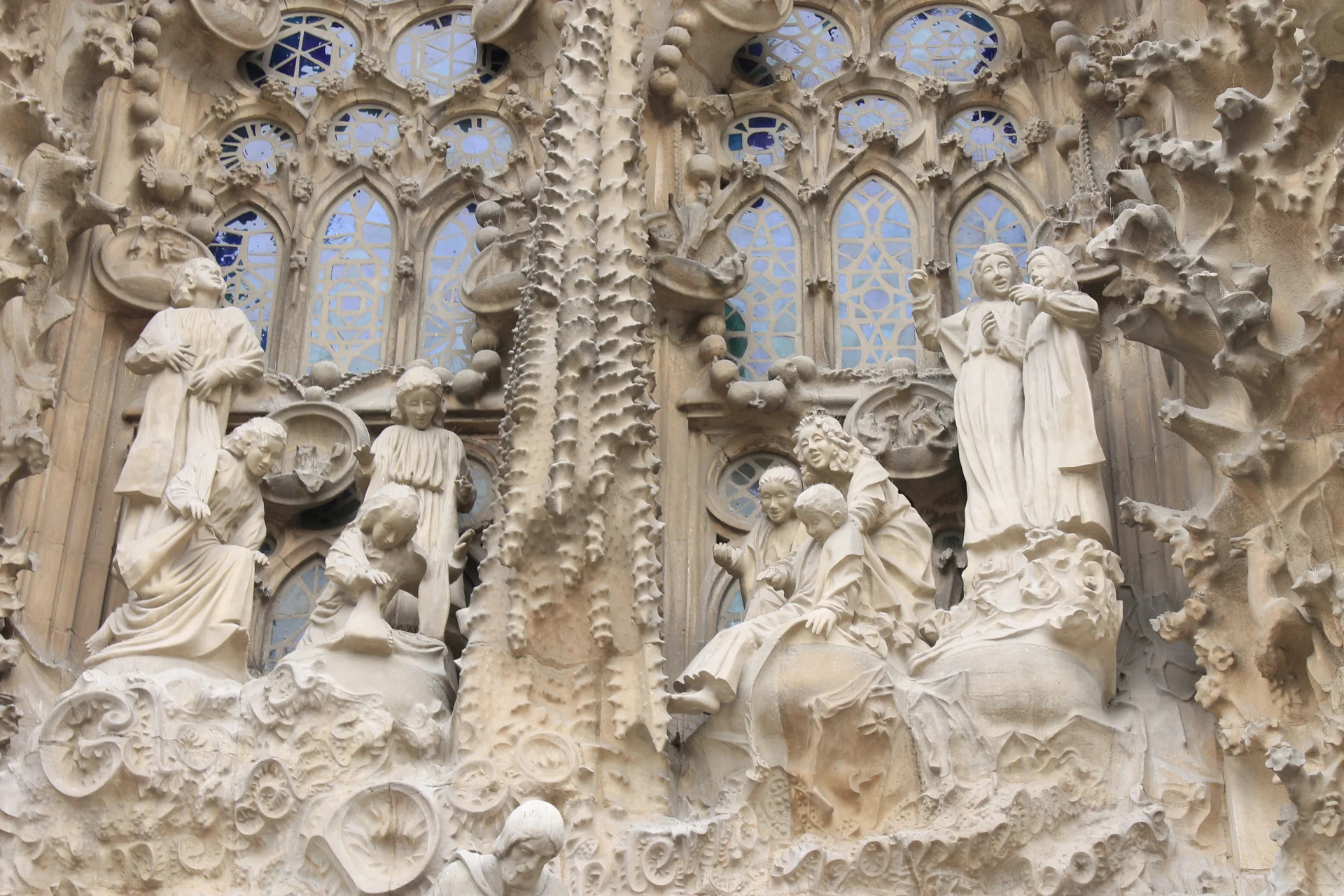
Sagrada Família Nativity Façade
The Nativity Façade represents Gaudí's most authentic vision, being the only façade completed under his direct supervision between 1893 and 1936. This extraordinary sculptural masterpiece celebrates Christ's birth through intricate stone carvings that seem to flow like living organisms from the façade's surface. Three portals dedicated to Faith, Hope, and Charity feature sculptures that appear to grow naturally from the stone itself, demonstrating Gaudí's revolutionary approach to religious architecture where every element tells biblical stories whilst showcasing innovative use of natural forms and light. The façade's organic design philosophy inspired by natural structures like honeycombs, forest canopies, and crystalline formations established architectural principles that continue influencing contemporary sacred architecture worldwide.
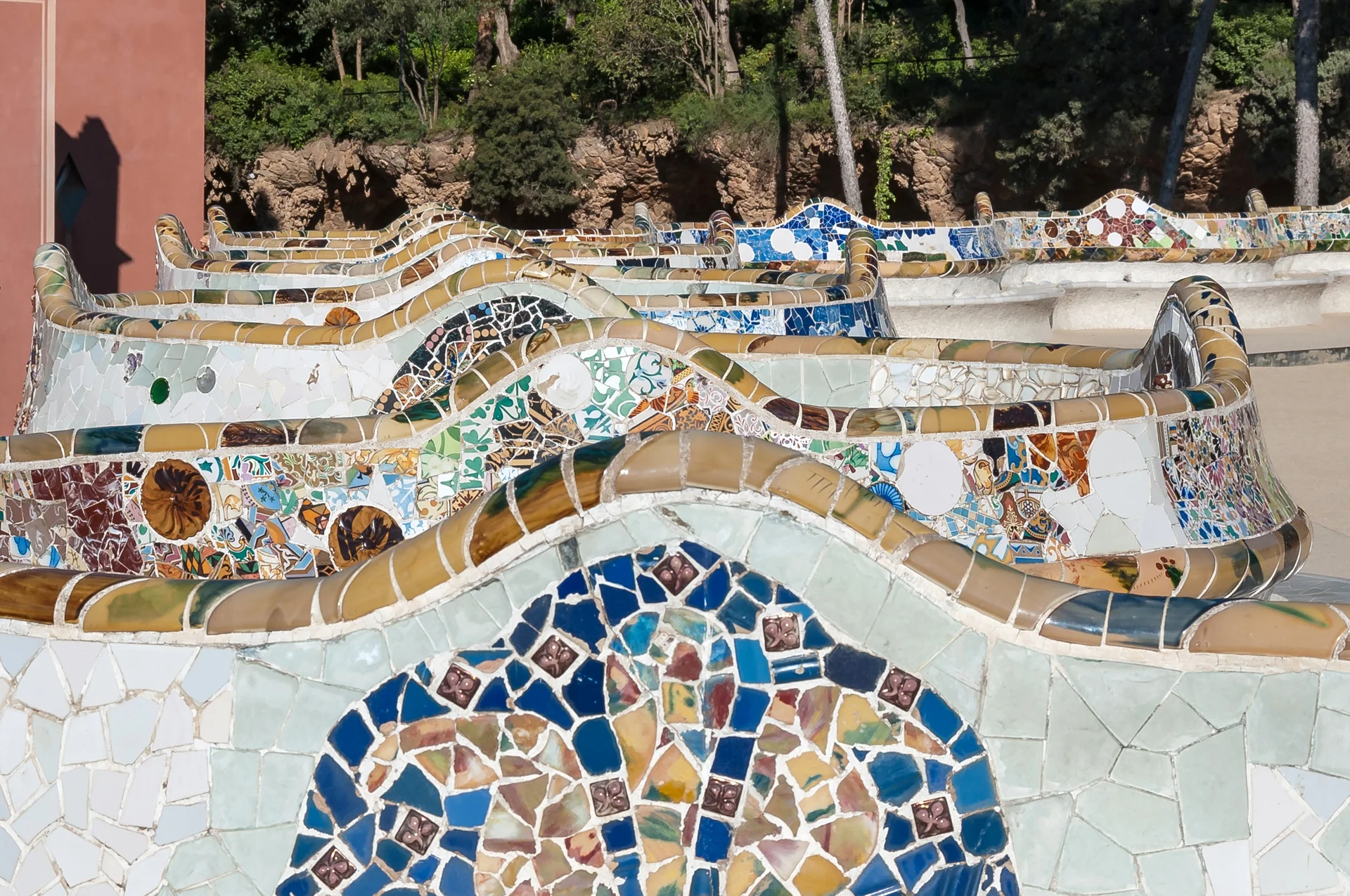
Park Güell Serpentine Bench
The iconic serpentine bench stretches over 100 metres along Park Güell's main terrace edge, offering panoramic views across Barcelona to the Mediterranean Sea. Created through collaboration between Gaudí and Josep Maria Jujol, this masterpiece of trencadís (broken ceramic mosaic) technique transforms functional seating into a vibrant work of art that follows the hillside's natural contours. The bench's undulating form encourages social interaction whilst providing ergonomic comfort through its carefully studied human proportions. This extraordinary fusion of architecture, sculpture, and decorative arts exemplifies Gaudí's philosophy of total artistic integration, where every element serves both practical and aesthetic purposes whilst celebrating the beauty of collaborative artistic creation.
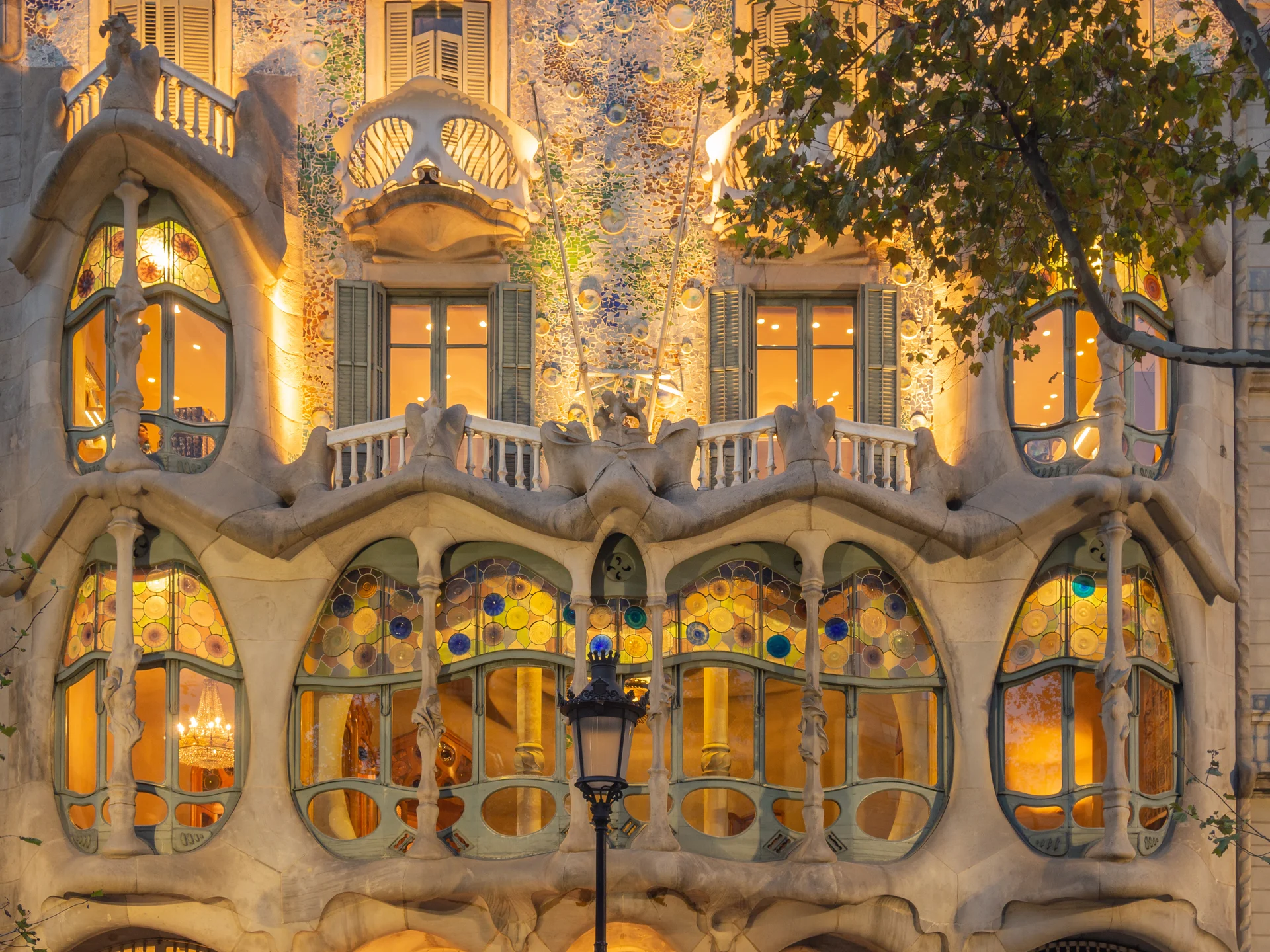
Casa Batlló Dragon Façade
Casa Batlló's extraordinary façade transforms a conventional 19th-century building into a living artwork that seems to breathe and change character throughout the day. Known locally as "Casa dels ossos" (House of Bones), the building features a mosaic of broken ceramic tiles that shimmer in shifting hues, whilst skeletal balconies and mask-like windows create an otherworldly appearance. The undulating roofline resembles a dragon's back topped with a cross-shaped chimney, representing Saint George slaying the dragon in Catalonia's patron saint legend. This mature work demonstrates Gaudí's complete mastery of architectural renovation, showing how traditional structures can be transformed into modernist masterpieces that challenge conventional boundaries between architecture, sculpture, and decorative arts.
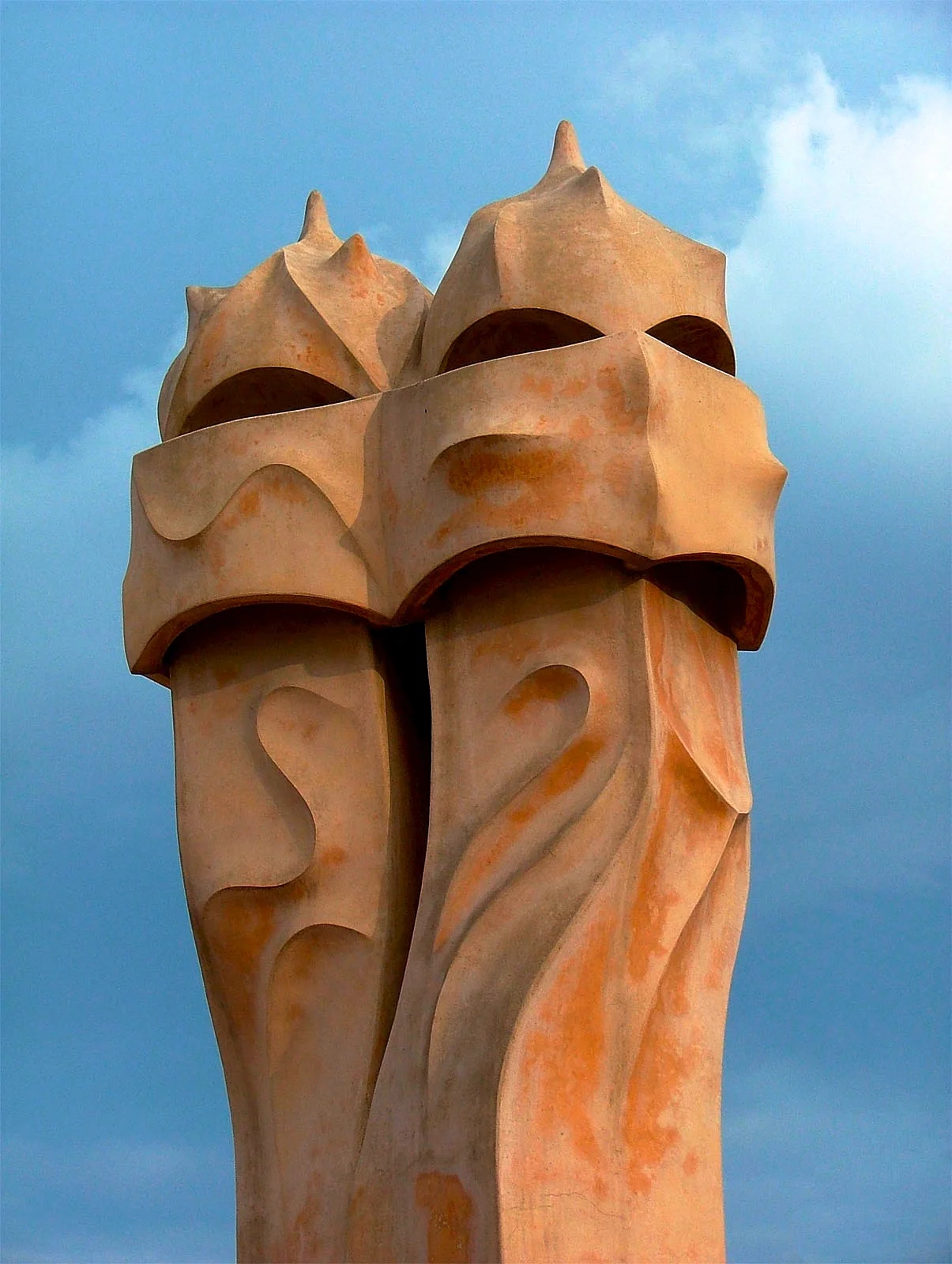
Casa Milà Sculptural Rooftop
The rooftop of Casa Milà creates one of Barcelona's most surreal architectural landscapes, where functional chimneys and ventilation towers become monumental sculptures rising like medieval warriors or abstract art installations. Each chimney features unique designs decorated with trencadís mosaics, demonstrating Gaudí's revolutionary philosophy that even the most utilitarian building elements should be beautiful and expressive. The rooftop offers visitors an extraordinary experience walking amongst these sculptural giants whilst enjoying 360-degree views of Barcelona's urban landscape. This innovative approach to functional architecture influenced generations of architects who recognised that practical building elements could simultaneously serve as artistic statements, establishing principles of integrated design that remain relevant in contemporary sustainable architecture.
Location & Planning
All Barcelona sites accessible via metro. Book timed-entry tickets online weeks ahead, especially Sagrada Família and Park Güell. Consider combination tickets for multiple sites. Organised walking tours cover multiple buildings.
Loading map...
Frequently Asked Questions
Seven of Antoni Gaudí's buildings are inscribed as UNESCO World Heritage Sites: Sagrada Família, Park Güell, Casa Milà (La Pedrera), Casa Batlló, Casa Vicens, Palau Güell, and the Crypt in Colonia Güell. They represent exceptional architectural innovation blending nature with modernisme.
Construction began in 1882 and continues today due to Gaudí's design complexity, reliance on private donations rather than government funding, interruptions during the Spanish Civil War, and meticulous craftsmanship requirements. Expected completion 2026 (centenary of Gaudí's death), with full decorative elements by 2034.
All sites accessible via metro. Book timed-entry tickets online weeks ahead, especially Sagrada Família and Park Güell, which sell out rapidly. Consider combination tickets for multiple sites. Organised walking tours cover several buildings with expert guides. Allow travel time between sites across Barcelona.
April-June and September-October offer mild temperatures (15-22°C) with fewer crowds. Visit early morning or late afternoon for optimal lighting. Book tickets months in advance for peak season. Spring and autumn provide ideal weather conditions with better photography lighting.
Yes, advance timed-entry tickets are essential for all major Gaudí sites, especially Sagrada Família and Park Güell, which often sell out weeks ahead. Casa Milà, Casa Batlló, and other sites also require advance booking. Consider combination tickets for savings.
Sagrada Família is essential as Gaudí's masterpiece and most authentic vision. If visiting only two sites, add Park Güell for outdoor experience. For three sites, include Casa Batlló for residential architecture. Casa Milà offers the best rooftop experience.
Trencadís is Gaudí's distinctive mosaic technique using broken ceramic tiles, glass, and pottery arranged in colourful patterns. This method, developed with collaborator Josep Maria Jujol, creates the vibrant surfaces seen at Park Güell's serpentine bench and Casa Batlló's façade.
UNESCO World Heritage Criteria
Inscribed in 1984, this site meets 3 of UNESCO's 10 criteria for Outstanding Universal Value
Criterion (i): Masterpiece of human creative genius
Gaudí's works represent absolute masterpieces of creative genius through revolutionary structural systems eliminating load-bearing walls, innovative use of parabolic arches and hyperboloid vaults in the Sagrada Família, and extraordinary integration of architecture with decorative arts creating unprecedented total artistic environments blending Gothic traditions with modernist innovation.
Criterion (ii): Interchange of human values
Gaudí's architectural innovations facilitated significant interchange of human values, spreading Catalan modernisme principles throughout Europe and influencing Art Nouveau development, whilst his revolutionary structural solutions and naturalistic design philosophy profoundly impacted 20th-century architectural theory and contemporary organic architecture worldwide.
Criterion (iv): Outstanding architectural/technological ensemble
Gaudí's buildings exemplify outstanding architectural achievement through the Sagrada Família's soaring forest-like interior, Park Güell's harmonious integration with landscape, Casa Milà's self-supporting undulating facade, and innovative construction techniques that created entirely new architectural possibilities whilst expressing profound Catalan cultural identity.
Historical Context
Early Career (1878-1888)
Gaudí developed his distinctive style beginning with Casa Vicens, incorporating Mudéjar influences and geometric patterns that would evolve into his signature organic forms. His early works demonstrated mastery of traditional Catalan craftsmanship whilst experimenting with new structural possibilities.
Mature Period (1888-1910)
Gaudí created his most celebrated residential masterpieces during this extraordinarily productive period, including Casa Batlló with its dragon-scale roof and Casa Milà with self-supporting facades. These buildings demonstrated his revolutionary structural engineering that eliminated traditional load-bearing walls whilst perfecting the seamless integration of architecture with decorative arts.
Sagrada Familia Focus (1910-1926)
Gaudí devoted his final sixteen years exclusively to the Sagrada Família basilica, living on-site and refusing all other commissions to perfect his ultimate architectural vision. During this intensive period, he developed the revolutionary forest-like interior columns and hyperboloid vaults that define the basilica's extraordinary structural system.
UNESCO Recognition (1984-2005)
UNESCO inscribed four Gaudí buildings in 1984, recognising their exceptional artistic and architectural value. In 2005, three additional properties joined the World Heritage list, acknowledging the complete evolution of Gaudí's groundbreaking architectural innovations. This progressive inscription demonstrated international recognition of his profound influence on modern architecture worldwide.
Conservation & Protection
Current Conservation Status
Active conservation and completion programmes ensure Gaudí's architectural legacy continues evolving whilst preserving historical authenticity. Specialist teams work continuously to maintain structural integrity and artistic elements across all seven properties.
Conservation Challenges
- Balancing ongoing Sagrada Familia construction with historic preservation requirements for completed sections
- Tourism pressure requiring visitor management at Barcelona's most popular architectural sites
- Urban development pressure in Barcelona affecting settings of Gaudí buildings
- Climate change effects accelerating weathering of exterior stone and ceramic elements
Active Conservation Efforts
- Advanced digital documentation preserving construction techniques and artistic details for future generations
- Specialist restoration using traditional materials and methods consistent with Gaudí's original vision
- Educational programmes promoting understanding of Gaudí's architectural innovations and cultural significance worldwide
- Scientific monitoring of structural systems to ensure long-term stability of all properties
Image & Content Attribution
Research & Content Sources
Photography & Visual Media
Last updated: 11 October 2025